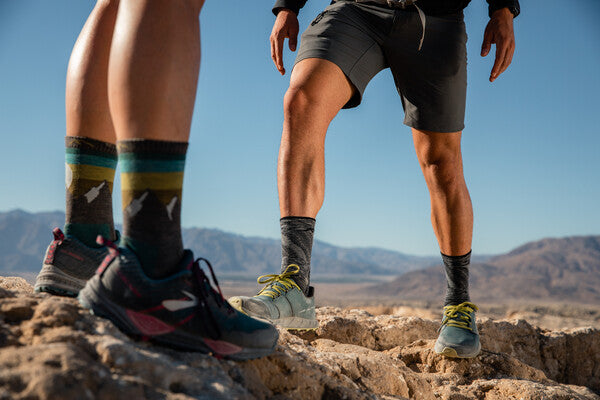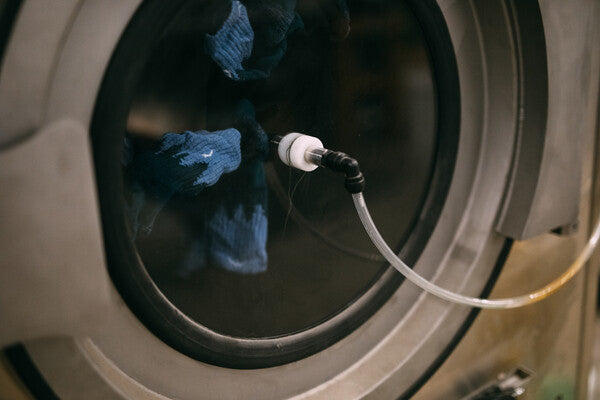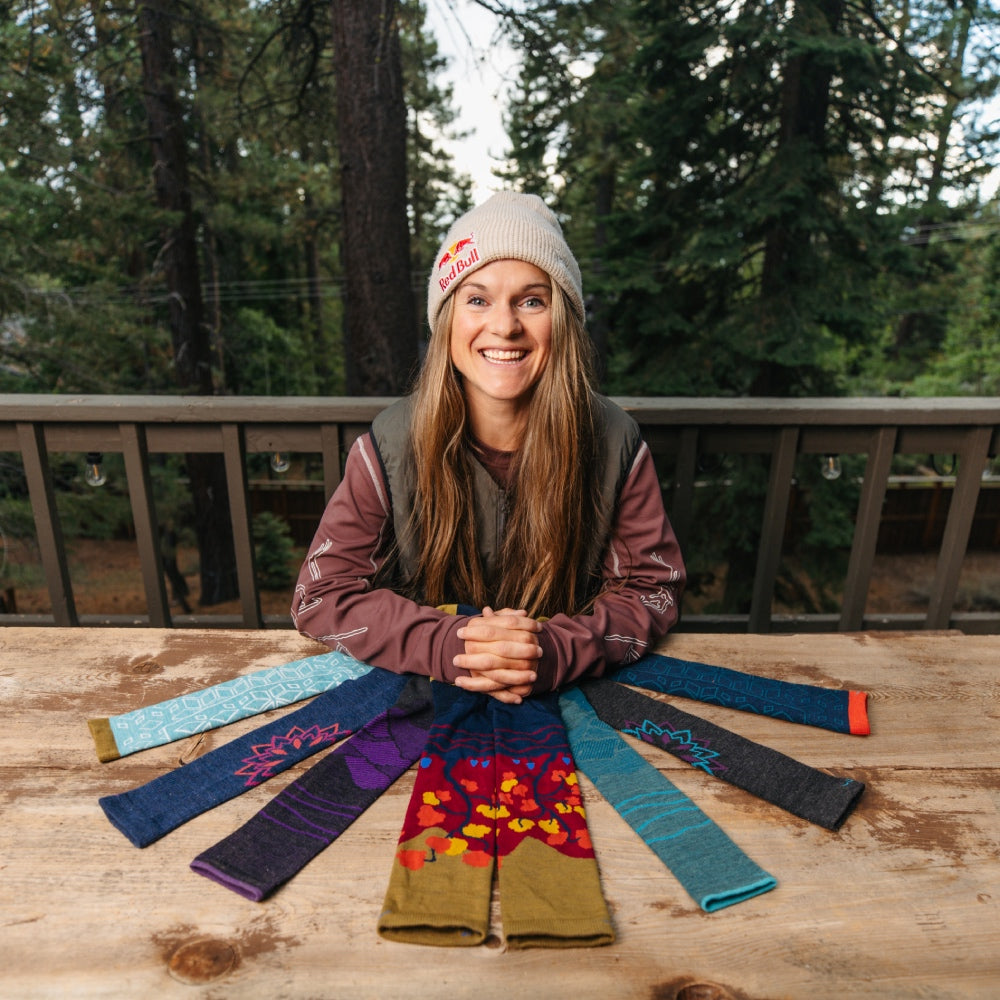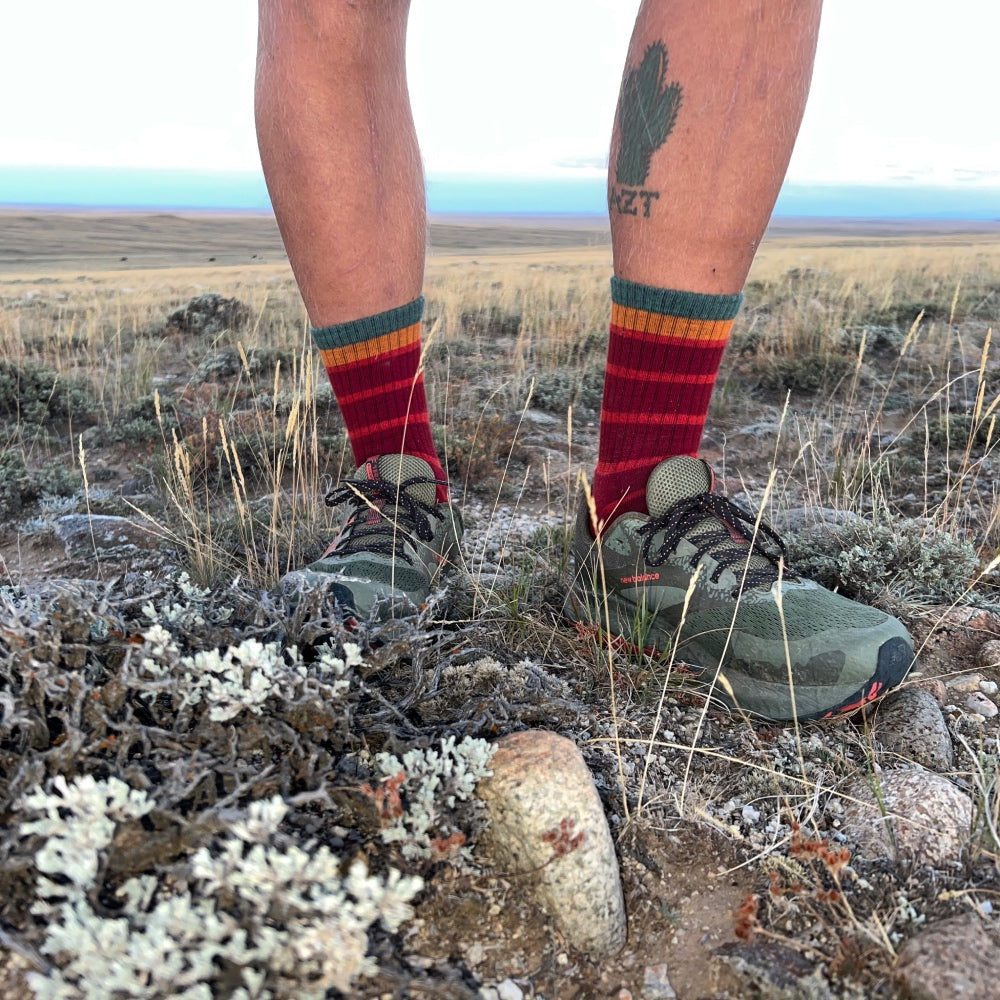How Long Do Socks Last? Understanding Sock Lifespan

How long do socks last? It’s a stumper of a question, since there are so many variables that go into their lifespan. Online, the most common answer is three to six months. If you’re thinking “geeze, that’s not very long,” likely you own a pair of Darn Tough socks.
Our Lifetime Guarantee is how we hold ourselves accountable for making a sock that will last the very longest possible. Folks that warranty their socks through our Lifetime Guarantee have been known to report wearing their Darn Tough’s for anywhere from four to eight years.
There are several key factors that can lead to a sock either wearing out before its expiration date or exceeding expectations and going the distance. When you take all this into account, is there a difference between how soon a “typical” cotton sock wears out and a Darn Tough sock? You bet.
Your Sock BFF
Before we dive into the details, a few amazing sock stories from you:
“I bought my first two pairs of Darn Tough socks about 500 miles into my Appalachian trail thru-hike, when the socks I started with wore out. Holy moly! Not only did these Darn Tough socks finish the AT with me, but they also made it through a second thru-hike, hundreds of miles of trail running and half-marathon training, and weekly use for eight years,” says Valerie D.
“I’d been looking for a comfy red sock and these are perfect. I used my lifetime warranty credit to replace a pair of striped crew socks I wore for about 13 years that got a bit threadbare. Looking forward to wearing these new ones for the next 13!” says Scott D.

It Starts with Sock Quality
How is it that some socks last months and others years? Lower-quality materials and manufacturing standards will yield a product that wears out sooner, the clear starting point for looking at sock lifespan.
Those folks saying a sock will wear out in a few weeks or a month? Likely they were referring to the kind of cotton tube socks you get in a discount multi-pack. No shade here, sometimes that’s all you can get your hands (er, feet?) on.
But in the long run, cotton will go limp, get soggy, and blow out much faster than a high-durability material like Merino Wool — to a degree that you might just end up spending more overall.

Darn Tough, on the other hand, was designed from the start around the durability of Merino Wool. Merino Wool’s structure gives it a crazy amount of rebound, meaning it can take a lot of use and bounce back to its original shape.
Even though Darn Tough was founded at a time when this natural fiber wasn’t as well understood, Merino Wool was the must-have ingredient for making socks that would be the most durable in the business. So durable, we could back them up with a lifetime warranty.
Owen Rachampbell, Darn Tough Product Line Manager, says longevity starts with “quality fibers and fine gauge knitting. The better the materials, the better the socks and the longer they will last. Fine yarns and a high needle count (168 of them at Darn Tough) create a dense knit for a stronger finished sock and higher durability.”

Our original claim to fame was being the choice for thru-hikers, a group of folks known to push themselves and their gear to the limit, requiring the most reliable socks possible.
Combine Merino Wool’s natural durability with Darn Tough’s exacting and always-improving quality standard, and you get a sock that is the best it can be, every time, for a pretty dang long time.
Merino Lets You Stay in the Game Longer
Imagine wearing those typical cotton tube socks for a run, a hike, or even just a good walk, and then doing it again the next day… and the next day. How many times would you go before simply grabbing another pair from that multipack?
It’s true, some of us took a while to discern the difference between hygiene and convenience (see, or rather smell, a pair of teenage-to-mid-20's snowboard boots for evidence). Typically, those sweat-swollen, elastic-limp, tube socks would be in the hamper after one wear.

Depending on the activity, Darn Tough socks can stand up to a lot more use before they hit the wash cycle. That’s because Merino Wool naturally thermoregulates, actively working to keep your skin at a balanced temperature whether it’s hot or cold outside, so you simply sweat less. And when you do, Merino Wool wicks away stink-causing sweat and naturally neutralizes odor.
In short, you can wear Darn Tough longer between laundry loads — another place in the sock ecosystem that adds wear without even wearing the things.
Performance Fit for Duty
Back to our box-store tube sock sample. Take a look at those things. Are they put together in a way that matches your foot’s shape? Or are they, as the name implies, basically a tube that you pull onto a part of your body that’s definitely not tube-shaped? Probably the latter.
Having a sock that fits properly isn’t just a matter of performance, or of avoiding the dreaded slouch. A sloppy fit with extra play doesn’t just droop and bunch — it doesn’t last as long. Darn Tough socks are built with Performance Fit and a Seamless Toe, designed to meld to the natural contours of your foot, stay put, and move with your body while reducing the potential pinches, and wear, of additional seams.

“Performance Fit is key,” says Owen. “The better the sock fits your foot and acts like a second skin, the longer it will hold up. Bunching will cause unnecessary wear.”
In short, Performance Fit makes sure your socks stay up and stick around for the long haul.
Spandex and nylon play their role in enhancing fit, but the real the hero is Merino Wool, a natural fiber whose crimp (the shape of the individual strands of Merino) allows it to flex and bend easily. We work with Merino Wool by steam washing and form-drying our socks by size.
Merino Wool and purposeful design and manufacturing come together to produce a sock that maintains its fit while moving with you — increasing comfort, performance, and longevity.
Activity Specific
What sort of activity and the duration of wear you engage in are two more lifespan-impacting factors. People don’t thru hike in cotton tube socks (well, anymore), because that sort of extended use can wear right through those socks, not to mention create blisters from a poor fit. Cotton socks simply aren’t very “activity specific,” and therein lies the problem.
We make one thing, and one thing only: socks, and we design them for specific activities. From hiking to running, snowboarding and skiing to working, we’ve got it covered.
Run socks have extra ventilation, reinforced Achilles area, and flex zones to boost breathability, reduce abrasion in high-wear areas, and move freely mile after mile.

Our wool work socks have reinforced footbed cushioning, ribbed cuffs, and optional cushioned toe boxes for all-day comfort on your feet, a soft but reliable fit, and integration with steel toe boots.
These aren’t just “features:” what makes the difference here is you’re wearing a sock built for the demands of whatever you’re doing. We look at how strain and wear differ on the trail versus on the snow, and continually use that feedback to improve each category.
Bonus Round: Going the Extra Mile
Cotton vs Merino Wool is like one of those rigged boxing matches where you just know one opponent is going to lose. To be fair, cotton is super comfy in plenty of applications. It’s just probably not what you want to be wearing on your feet, especially if you’re looking for things to last.
While we’ve got a clear winner, we want to go the extra mile with a few quick steps to boost the longevity of your favorite pair of Darn Toughs.
Proper Footwear for the Activity

“Footwear can have a major impact on sock lifespan,” notes Owen. “Hiking shoes or boots that allow debris and dirt inside (non-waterproof shoes on muddy trails, for instance) can create microscopic abrasion at the fiber level. And shoes that you might slip around a lot (waders, rubber boots) will create wear zones over time too.”
Our socks come with Performance Fit, making the next step finding footwear that protects your feet (and socks), and fit as good as possible.
Wash Cold, Air Dry, and Fold
Start with an assessment of when you should wash your Darn Tough socks. If you’re new to Merino, it can seem like one wear per wash. But as we’ve seen, wool does a lot of the work to keep your feet dry and funk-free.
“On one hand, washing wears out clothes,” says Owen. “On the other, so does debris inside your socks, so I’d say wash only when it’s truly needed.”

While it’s personal — from three weeks straight on the trail (like one of Owen’s trekking bids), to a voluntary 40-day-straight wear-test, you can go a long time. Once you’ve got your rhythm down, five things to keep in mind on laundry day for making those socks last:
- Turn them inside out: We use terry loops for cushioning, so this helps keep all systems clean
- Wash in cold or warm water: High heat can weaken fabric fibers and fade colors
- Use a pH neutral detergent or soap: Acids or alkalis can weaken sock fibers
- Air dry or tumble dry low: Excess heat can wear down your socks
- Fold your socks: Stretching one on top of the other can stretch out your socks prematurely
Clip Your Nails
This one is obvious: a sharp nail can catch on those terry loops, tearing the knitting and leading to a hole.
Keep your socks in good shape — and your partner, family, and friends happy — by keeping those toenails tuned up.
It's About Rotation (AKA Know When to Swap 'Em Out)
Thru hikers certainly aren’t trekking with a 12-pack of cotton socks in their packs. Our socks are built for repeated wear, without washing.
Still, it’s a good idea to have a few pairs on hand for rotating out, especially during high-impact activities like running. Giving your hardest working socks a rest between use, even if you aren’t washing them, can extend lifespan.
Wear Them Out, Return Them, Repeat
Back to the cage match between cotton tube socks and Darn Tough Merino wool socks. Will either last forever? Definitely no on the tube socks, we’ve all seen them come to an end.
What about Darn Tough socks? They will for certain go longer. When we saw that everything on the internet about sock lifespan was about “typical socks,” we knew we had to make our stand. Actually, it started with you.
“I have been wearing only these socks for a decade or so, fall through spring. Their guarantee makes the price worth it, but you will not need to return them. They are AMAZING. I love the new colors, although I have had the original green ones with purple trim for twelve years and still love them the best. No holes yet! And they never seem to get smelly,” says Alyson E.
It’s ironic that in the pursuit of getting a cheaper pair of socks on your feet, you could easily end up spending more in the long run. If you’re swapping out your socks every three to six months, and you add that up over five years, you’re talking 20 socks (that's ten pairs).
Minor flex here, we often have people like Scott and Alyson write in saying they are finally, wistfully, warrantying their favorite Darn Tough’s after a decade-plus use.

But even for our amazingly durable, breathable, thermoregulating, and comfortable socks, there is an end of the day. It’s just going to come much, much later than anything packaged up in a box store multipack.
And because we believe in our product so much, if they don’t last forever, we’ll replace them. That’s what our Unconditional Lifetime Guarantee is about. Can “typical” socks match that? Nope.







